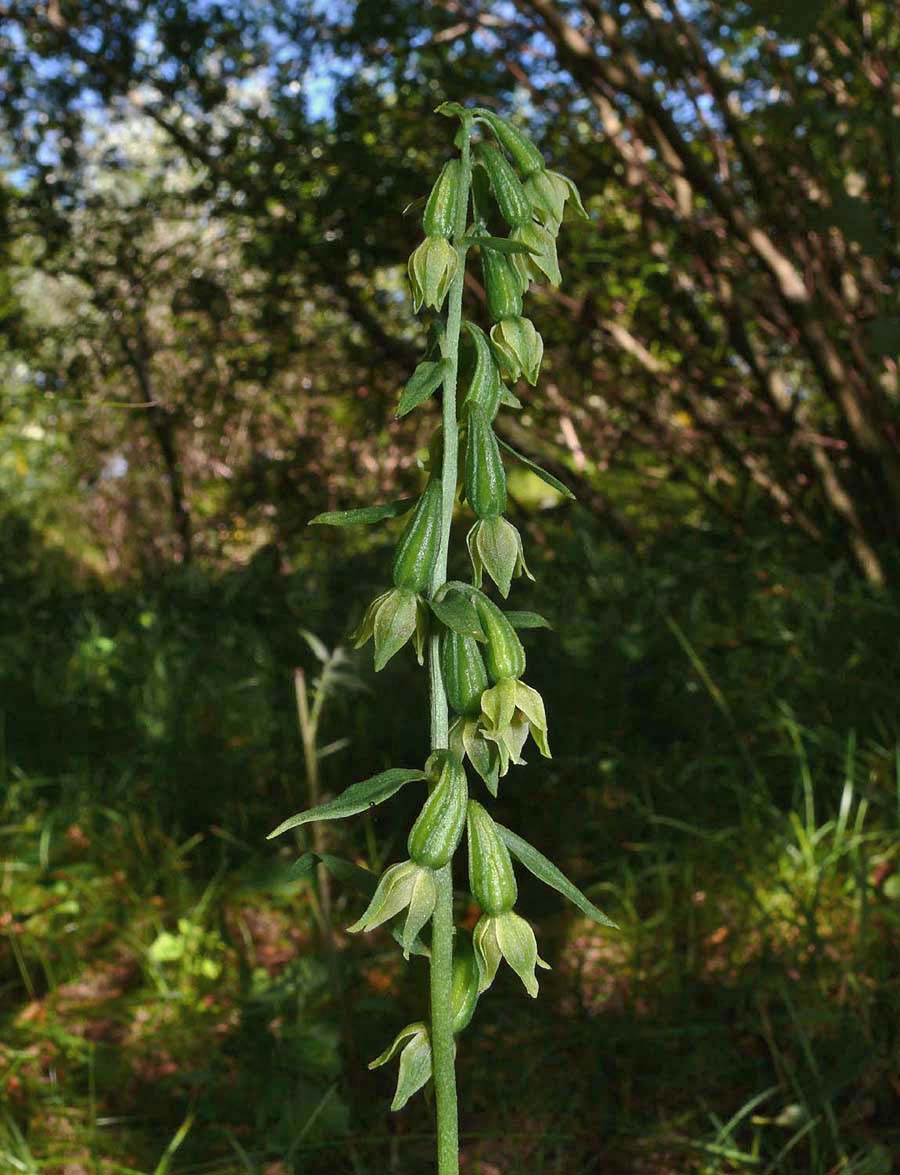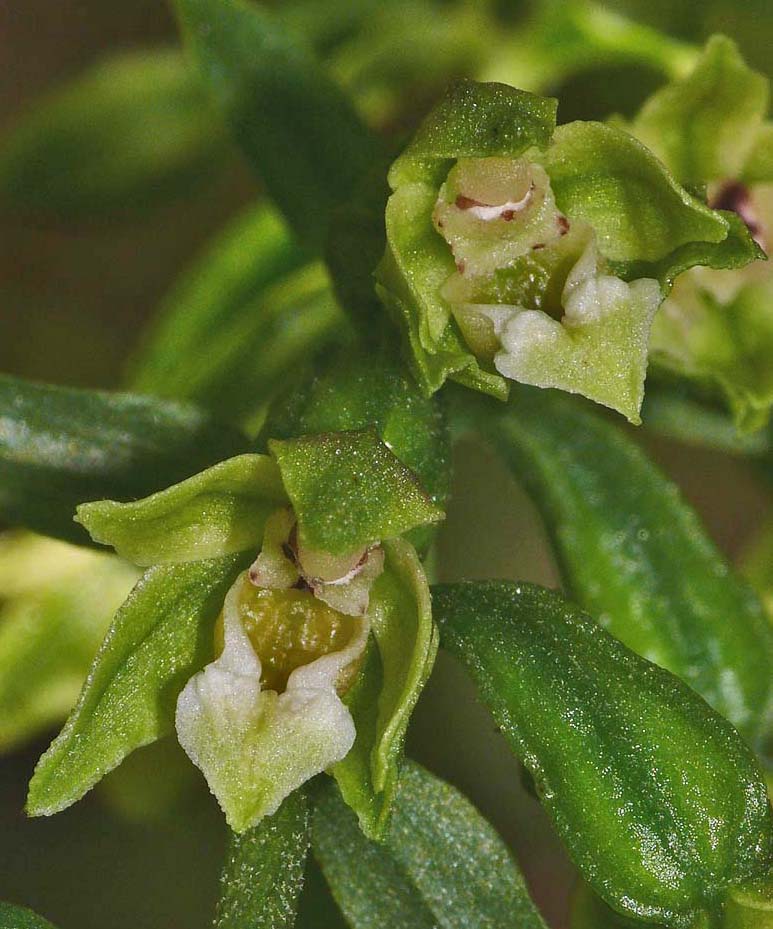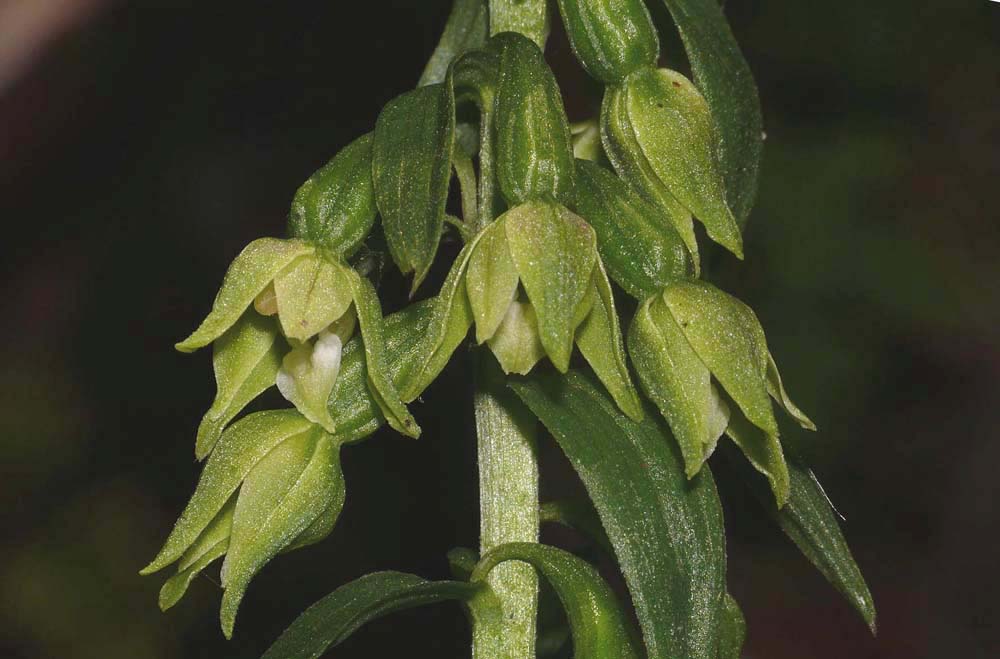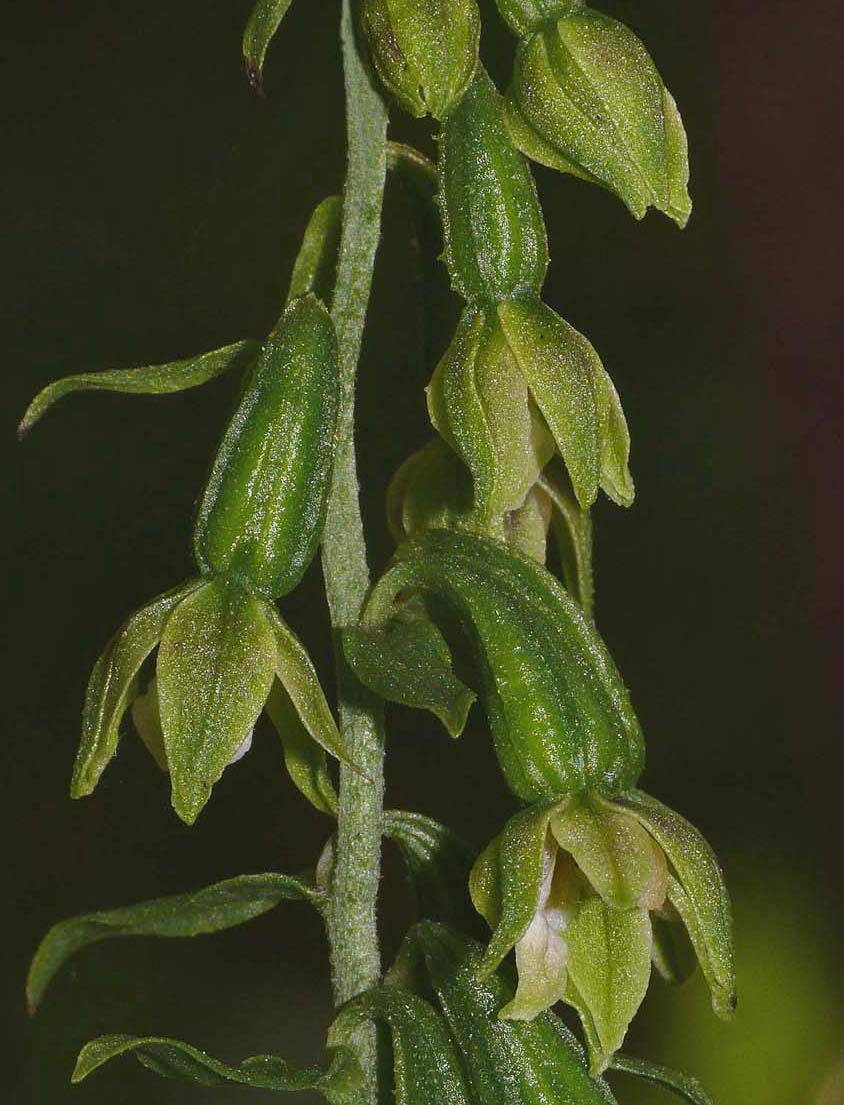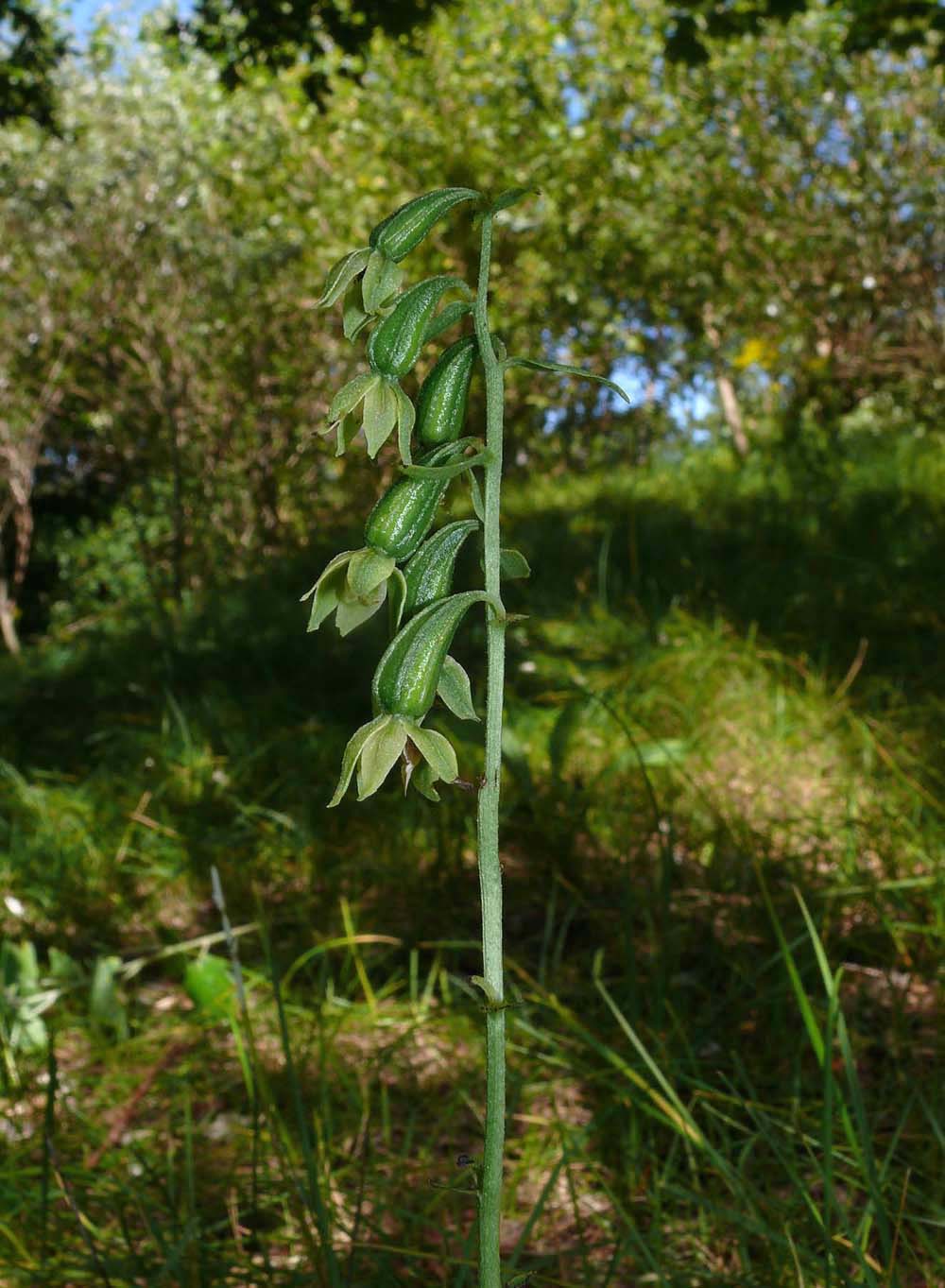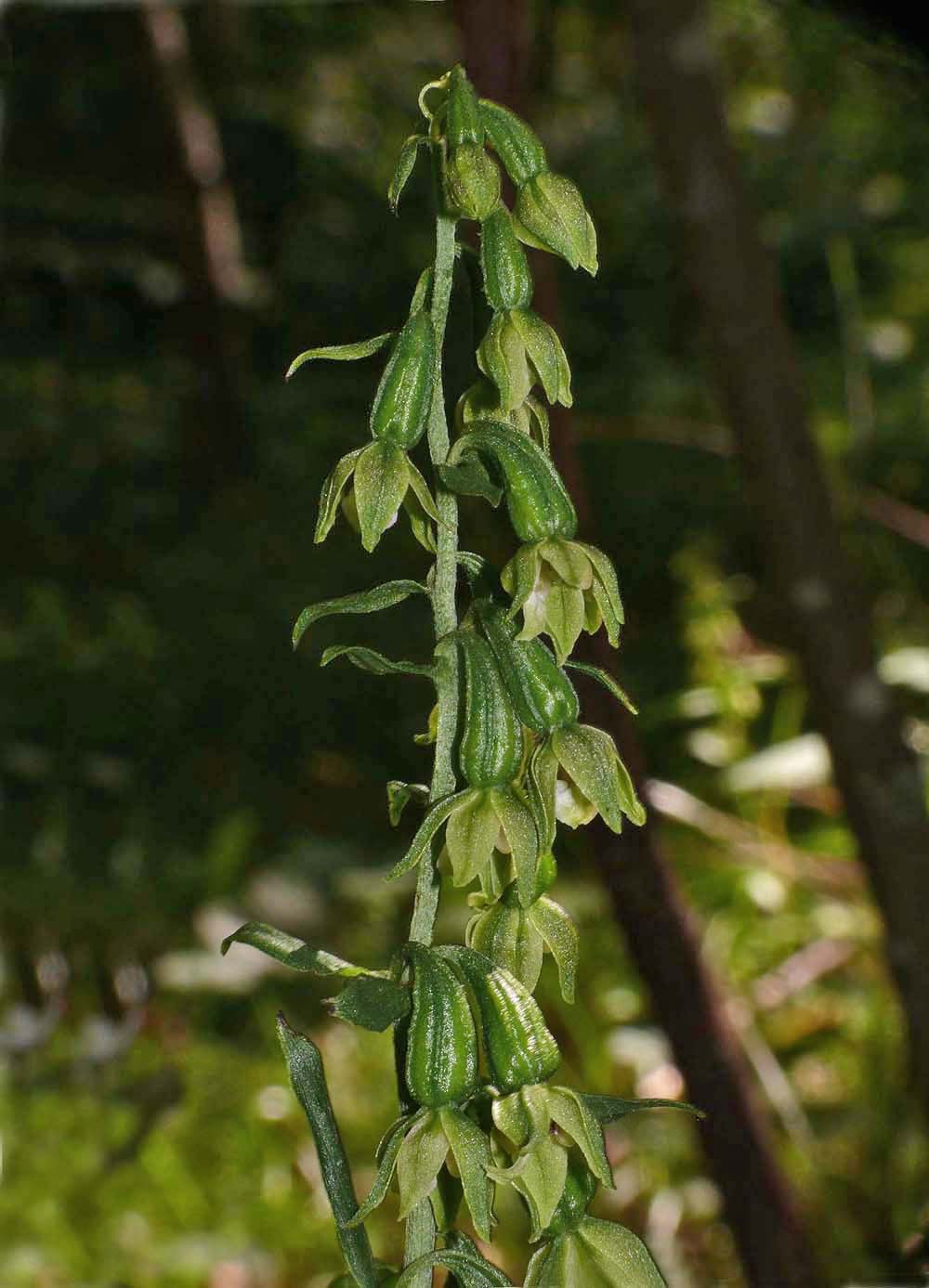E. phyllanthes
was first described by G. E. Smith from Sussex, England in 1852
but since that time several varieties have been recognized,
albeit the validity and status of them have been the subject of some
professional disagreement. The
situation in the UK
is relatively clear with five variations being recognized, these being E. phyllanthes v cambrensis, E. phyllanthes v pendula, E. phyllanthes v degenera, E. phyllanthes v phyllanthes and the variety described here E. phyllanthes v vectensis
This variety was first described from
the Isle of White, England by D. P. Young in 1952 and its varietal name
refers to that islands Roman name of Vectis. It is the most common
variety in the south of England but its range significantly overlaps
with that of pendula in many
areas both north and south. Intermediates are common, a factor that
complicates the already difficult task of differentiating them. As long
ago as 1962, Young observed that "there is no material dividing line,
either geographical or morphological that divides pendula and vectensis and the names are retained only for the convenience of description".
E. phyllanthes v vectensis in its typical form is generally a much less robust plant, often appearing quite sickly with few flowers, especially in low light conditions. An important aid to identification is the fact that it is more frequently cleistogamous, sometimes many of the flowers within the inflorescence failing to open at all or only partially. The epichile is somewhat slimmer than in pendula and although it does similarly curve backwards, the angle of reflex is less and may rarely appear nearly straight. Usually however, it curves with age and becomes more difficult to distinguish from pendula.
The pictures date from the first week of August.
E. phyllanthes v vectensis in its typical form is generally a much less robust plant, often appearing quite sickly with few flowers, especially in low light conditions. An important aid to identification is the fact that it is more frequently cleistogamous, sometimes many of the flowers within the inflorescence failing to open at all or only partially. The epichile is somewhat slimmer than in pendula and although it does similarly curve backwards, the angle of reflex is less and may rarely appear nearly straight. Usually however, it curves with age and becomes more difficult to distinguish from pendula.
The pictures date from the first week of August.
